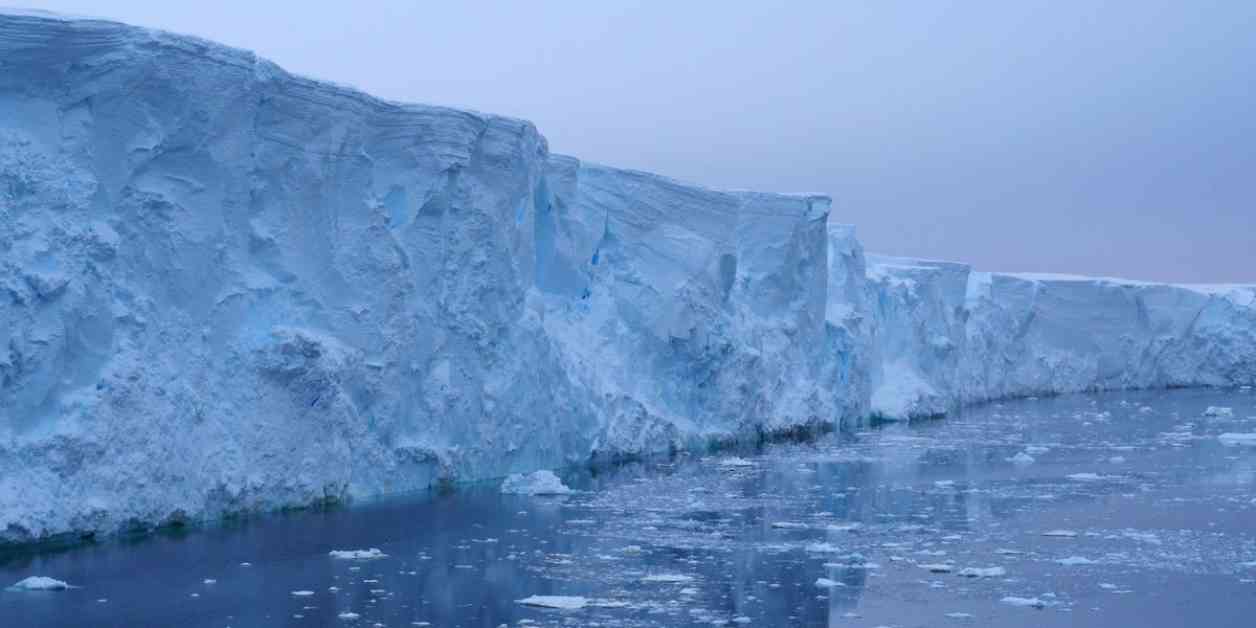Doomsday Glacier Threatens Catastrophic Collapse and Submersion of Earth
A recent science briefing has shed light on the alarming situation surrounding Thwaites Glacier in Antarctica, aptly named the ‘Doomsday Glacier’. This massive area of the West Antarctic Ice Sheet, equivalent in size to Great Britain or the US state of Florida, is under serious threat of melting, which could have devastating consequences for various parts of the world. The potential collapse of Thwaites Glacier poses a significant risk of submerging large portions of the Earth’s landmass underwater, a phenomenon that could have far-reaching implications for the global population.
The Threat Posed by Thwaites Glacier
The moniker ‘Doomsday Glacier’ is not an exaggeration when considering the implications of Thwaites Glacier’s potential collapse. Scientists have warned that if this glacier were to melt entirely, it could lead to a staggering 65cm rise in sea levels. While this may seem like a relatively small increase, the repercussions would be immense, particularly for the 44% of the world’s population residing within 150km of the coast. Additionally, with more than 70% of the planet’s surface already below sea level, the impact of such a rise would be catastrophic for coastal regions globally.
The International Thwaites Glacier Collaboration (ITGC), a joint project involving UK and US scientists, is working diligently to assess the rate and magnitude of ongoing sea level rises associated with Thwaites Glacier. The ITGC aims to provide critical insights into the potential impact of these rising sea levels on millions of individuals living in coastal areas ranging from Bangladesh to low-lying Pacific islands and from New York to London. The urgency of this research cannot be overstated, as the consequences of Thwaites Glacier’s collapse would be felt on a global scale.
The Accelerated Retreat of Thwaites Glacier
Dr. Rob Larter, a marine geophysicist at the British Antarctic Survey and a key member of the ITGC, has highlighted the concerning trend of Thwaites Glacier’s retreat over the past several decades. He noted that the glacier has been receding for more than 80 years, with a significant acceleration observed in the last 30 years. According to Dr. Larter, there is a consensus among scientists that Thwaites Glacier will continue to retreat at an accelerated pace within the next century, potentially leading to its collapse.
Recent studies have revealed additional processes that could expedite Thwaites Glacier’s retreat, prompting concerns about an earlier-than-anticipated acceleration of the collapse. Utilizing underwater robots to gather crucial data, the ITGC has projected that Thwaites Glacier and a substantial portion of the West Antarctic Ice Sheet may be lost by the 23rd century. Dr. Ted Scambos, the US science coordinator of the ITGC, emphasized the urgency of addressing this issue, as computer models predict a continuous loss of ice that could culminate in a widespread collapse of the West Antarctic Ice Sheet by the 23rd century.
The Impact of a West Antarctic Ice Sheet Collapse
The potential consequences of a complete meltdown of the West Antarctic Ice Sheet are staggering, with projections indicating a sea level rise of 3.3m if the entire ice sheet were to disintegrate. Such a significant increase in sea levels would have profound implications for coastal regions worldwide, leading to widespread submersion of land and displacement of populations. Immediate and sustained climate interventions are crucial in mitigating the impacts of this impending crisis, although the effectiveness of these measures may be limited by the delayed response to the warming of deep ocean waters that drive glacier retreat.
In conclusion, the threat posed by Thwaites Glacier, also known as the ‘Doomsday Glacier’, cannot be understated. The potential collapse of this massive ice sheet could have catastrophic consequences for global sea levels, coastal populations, and the overall stability of our planet. Urgent action is needed to address the accelerating retreat of Thwaites Glacier and mitigate the risk of a widespread collapse of the West Antarctic Ice Sheet in the coming centuries. It is imperative that we prioritize scientific research, international collaboration, and climate intervention efforts to safeguard our planet from the looming threat of submersion and devastation.













